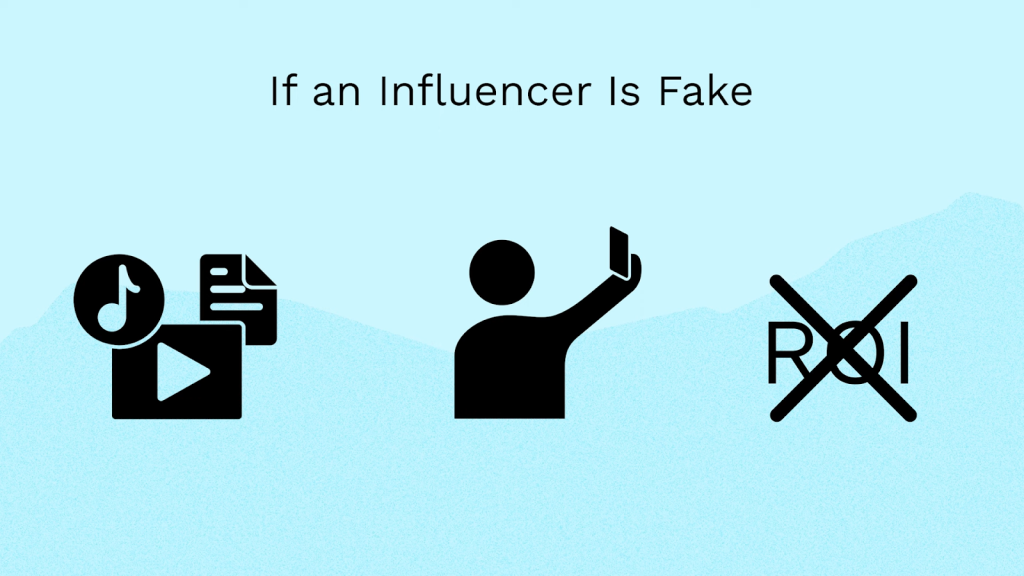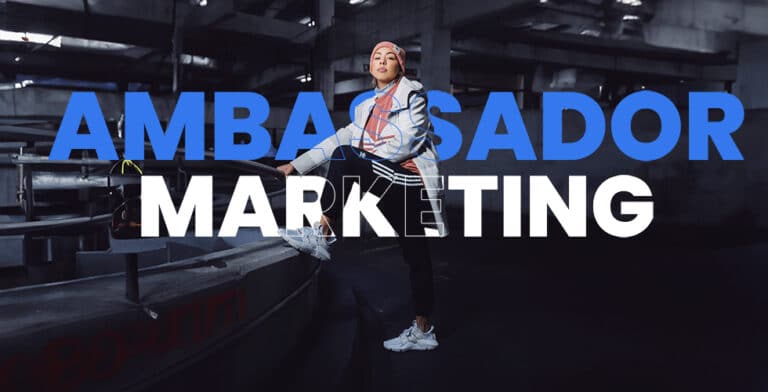Social media has convinced many people that success comes from having a huge number of followers. The thinking was – the more followers you had, the more popular and influential you were.
Driven by this belief, some influencers take shortcuts and purchase fake bot followers, believing it will make them appear more popular and influential. However, social media engagement doesn’t actually work this way. True influence comes from becoming a thought leader in your niche and building an authentic community around your brand.
So how can you recognize which influencers have fake followers versus real, engaged followers?
This comprehensive guide will teach you how to analyze influencer accounts and recognize signs of fake followers. We’ll also discuss tools that simplify the vetting process. So, let’s get started.
Why Fake Followers Hurt Your Brand?
Fake social media followings undermine the entire premise of influencer marketing strategy. Influencers are supposed to have strong connections with their audience built on trust and affinity. Followers that were purchased or automated bots have zero connection to the influencer or loyalty to their brand partnerships.
These lifeless accounts will not engage with or be persuaded by the content influencers post on behalf of brands. Any metrics or campaign results will be completely fabricated. Brands derive no value from the partnership.

Worse still, fake followers can actively damage the brand’s reputation and credibility. Audiences can usually recognize when an influencer has an inauthentic following. And research shows that consumers deeply distrust paid influencer sponsorships already.
Partnering with an influencer who is blatantly artificially inflating their reach signals to audiences that the brand is untrustworthy. It reflects poorly on the brand’s judgment as well.
The only influencer collaborations that provide real value are those with genuine engagement and connection between the influencer and their real human followers.
Signs of Fake Followers to Look For
Here are the top signals that an influencer’s following includes a high percentage of fake or bought accounts:
1. Check the Engagement Rates
Checking an influencer’s engagement rate is one of the most straightforward ways to identify potential fake followers. The engagement rate shows what percentage of an influencer’s followers actively interact with their content through likes, comments, and shares.
A low engagement rate compared to influencers of similar size and niche is a major red flag signaling that the influencer likely has a substantial number of inactive or bot followers.
However, you should also be cautious of influencers with a disproportionately high engagement rate that seems illogical based on their niche, content style, or target audience. An unusually high rate can also indicate the use of manipulative tactics to simulate engagement.
To properly assess the authenticity of an influencer’s engagement, you should compare their overall engagement rate to the size of their following. Here are the steps for calculating an influencer’s average engagement rate:
- Add up the total number of engagements (likes, comments, shares) on their posts within the last 30 days.
- Count the total number of posts they shared over the same 30-day period.
- Divide the total engagements by the total number of followers the influencer currently has.
- Multiply the result by 100 to express it as a percentage. This gives you their average engagement rate for the 30-day period.

Average engagement rates vary widely depending on niche and account size. Here are typical benchmarks to look for:
Nano influencers – Up to 1k followers
- 8-15% engagement
Micro-influencers – 1k to 10k followers
- 3-10% engagement
Mid-tier influencers – 10k to 100k followers
- 1-5% engagement
Macro influencers – 100k to 1 million followers
- 0.5-3% engagement
Mega influencers – Over 1 million followers
- 0.5-2% engagement
Higher than average engagement signifies an influencer with a highly interested audience that closely follows their content. Lower than-average engagement means their content doesn’t strongly compel their followers to interact.
Unusually low engagement for an influencer’s niche and follower size is a major red flag. For example, someone with 50k followers but only getting 50 likes per post likely inflated their count with fake followers. The fake accounts don’t engage because they’re not real people.
Prioritize partnering with influencers whose audience enthusiastically engages with their content.
2. Analyze the Follower-to-Following Ratio
One simple method for spotting suspicious influencer accounts is to examine their follower-to-following ratio. Legitimate influencers usually have more followers than accounts they follow themselves.
However, you need to be cautious even when an influencer maintains an equal balance between their followers and who they follow.

While this type of equilibrium can occur naturally, it could also be indicative of an influencer using shady “follow for follow” or “shoutout for shoutout” tactics solely to inflate their follower numbers. These types of followers often have no authentic interest in the influencer’s brand or content.
Additionally, many influencers who provide fake followers will use just one or two accounts to follow hundreds of brands. This makes their following-to-follower ratio appear very unnatural and skewed.
3. Evaluate Follower Quality
This involves looking closely at the influencer’s followers to gauge whether they seem to be real, relevant people who are actively engaged with the brand. Fake followers often exhibit these kinds of suspicious signals:
- Random, nonsensical, or bot-like usernames
- No profile picture
- Very little or no bio information
- Posting irrelevant, spammy, or bot-like content
Conversely, signs of genuine, high-quality followers include:
- Usernames that appear to be real people’s names
- Clear, high-quality profile pictures
- Relevant bio information
- Sharing authentic, niche-related content
Here are some of the specifics to keep an eye out for when assessing an influencer’s followers:
- Followers with no previous posts or profile pictures – This is a strong indicator of fake bot accounts.
- Private accounts and usernames that appear randomly generated or spammy – This should raise suspicions about the legitimacy of the follower.
- Irrelevant, spammy, or bot-like comments on the influencer’s posts – While a high volume of comments may seem like positive engagement at first glance, take a closer look at the content. Comments that appear irrelevant, oddly worded, or spam-like likely come from fake bot accounts.
- Followers that are or follow accounts associated with “fan growth” services – Seeing an influencer follow or be followed by accounts that promote services for buying fans or followers is a major red flag. It suggests the influencer may be inflating their stats with bought fake followers.

4. Watch for Sudden Spikes in Followers
The patterns in how an influencer gains followers over time also reveal a lot about authenticity. Using tools like SocialBlade, you can see daily and monthly follower growth charts going back years.
Legitimate organic growth tends to be relatively steady and gradual over long periods. However, these patterns should raise alarms:
- Massive short-term spikes – Gaining tens or hundreds of thousands of followers over 1-3 days implies a big fake follower purchase.
- Steep drop-offs after spikes – Losing a huge portion of followers after a spike means accounts were culled.
- No alignment with major events – Gaining followers for no discernible reason often means bot accounts were added.
Slow consistent growth aligned with the influencer’s content themes and major events is ideal. Sudden massive shifts in follower counts are a dead giveaway of inauthenticity.
5. Follower Location Analysis
You can also analyze the geographic distribution of an influencer’s followers versus their engagement. This gives insight into whether their count includes irrelevant fake accounts.
For example, if 90% of an influencer’s followers are located in Brazil, but the majority of likes and comments come from the United States, it’s likely that a portion of the Brazilian followers are bots or paid accounts. The genuine engagement is coming from the U.S.
Ideally, the locations of an influencer’s followers should strongly align with where their content sees engagement. Mismatches imply fake localized accounts were added.
6. Hashtag and Caption Analysis
The hashtags and captions influencers use provide hints about black hat tactics used to inflate followers. For example:
- Excessive hashtags – Posts loaded with irrelevant hashtags are trying to manipulate the algorithm and get onto random feeds. This attracts irrelevant followers.
- Follow/like for follow/like – Explicitly begging for engagement in exchange for following back grows follower counts but not actual interest.
- Spammy captions – Overly promotional language like “Check the link in our bio!” attracts bots.
Desperate pleas for engagement imply that the influencer cares more about follower vanity metrics than posting compelling content.
7. Look for Authenticity in Comments
In addition to fake followers, some influencers also buy fake post engagements such as likes or comments. This makes their content appear more popular than it really is.
Take a look at the comments on an influencer’s posts to try and gauge whether they seem to come from real, active followers versus bots or paid services.
Authentic user engagement typically involves meaningful, on-topic comments that relate to the content being posted. On the other hand, the following types of comments may be red flags signaling artificial or paid engagement:
- Comments consisting only of emoji reactions rather than text – a lack of meaningful context
- Short, repetitive, or generic phrases like “Nice!”, “Amazing post!”, “So cool!”
- Comment volume doesn’t match likes – A post with 500 likes but only 3 comments seems suspicious.
- Completely irrelevant or out-of-context comments like “What a cutie!” on a landscape photo
You can take this analysis a step further by clicking on some commenter profiles. Fake bot accounts or services often have very few posts, nearly non-existent follower counts, generic usernames with lots of numbers, no bio info, and private account settings.
8. Use Online Tools to Detect Fake Followers
Manually auditing an influencer account for fake followers requires scouring many data points. Specialized tools like HypeAuditor and Influencity automate fake follower analysis.
These platforms use machine learning algorithms trained to pick up on all the suspicious signals we detailed above. They run full audits and produce straightforward authenticity scores.
For example, HypeAuditor grades influencers on an A to F scale by assessing:
- Follower Growth Patterns
- Location Mismatch
- Engagement Authenticity
- Audience Quality
- Post Analysis
These services also benchmark influencers against comparable profiles to provide context on their follower authenticity. They simplify vetting at scale.
Here are some of the best tools for influencer analysis:
If manually evaluating an influencer’s account seems too tedious or time-consuming, there are a number of online fake follower check tools you can use:
- SocialBlade – SocialBlade can analyze influencer profiles on all major platforms like Instagram, YouTube, Twitter, Facebook, etc. You can use it to look at historical data and engagement patterns to detect potential fakes.
- HypeAuditor – This powerful Instagram analytics tool ranks influencers based on advanced AI analysis of their followers’ authenticity and engagement levels. It compiles ranked lists of influencers updated daily.
- Upfluence Chrome Plugin – This free plugin lets you get valuable stats on an influencer’s performance right on their social media page. It shows what % of their followers are real vs. fake.
- FakeCheck.co – Compares your expected engagement based on followers vs. actual likes/comments. Big discrepancies may reveal fake accounts.
- Social Audit Pro – For a fee, you can remove fake or inactive followers. Checks up to 20k followers for $20. Useful for influencer vetting and cleaning up your own account.
The key takeaway is that you should prioritize influencer partnerships with accounts that have a high percentage of real, actively engaged followers. This helps ensure you get true value for your influencer marketing spending.
Prioritize Transparency and Ethics
The best practice is to be completely transparent about vetting potential partners for fake followers. Avoid making direct accusations. Explain that auditing followers is a standard industry practice to meet legal requirements around disclosure.
If an influencer gets defensive or refuses to confirm follower authenticity, that reveals a lot. Responsible creators will share their own audit reports and take pride in their genuine engagement.
Work with influencer marketing platforms that prioritize transparency. For example, AspireIQ certifies influencers who pass their extensive four-tier vetting process on follower authenticity.
Maintaining high ethical standards around authenticity will attract creators passionate about forging real connections with audiences.
Maximize Campaign ROI with Genuine Influencers
Putting in the diligent work to recognize and avoid inauthentic influencers directly translates to positive marketing results. Partnering with genuine influencers whose target audience knows, likes, and trusts them is the only way to get a real ROI on your influencer campaigns.

Vetting for fake followers keeps your brand reputation intact and ensures that your messages reach real people. Follow the best practices in this guide and you’ll be able to collaborate with influencers that deliver actual strategic value.





